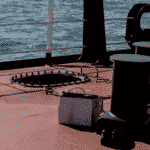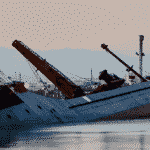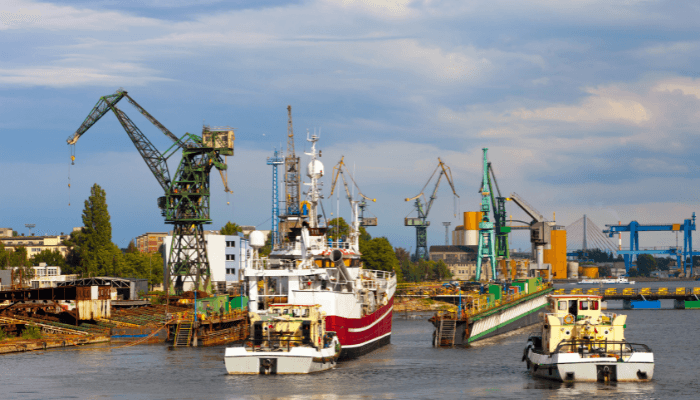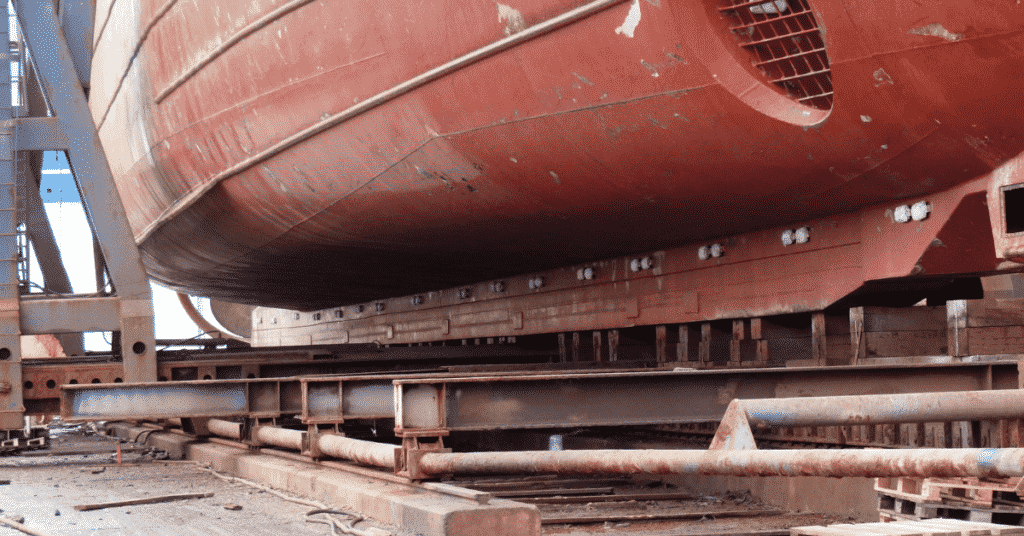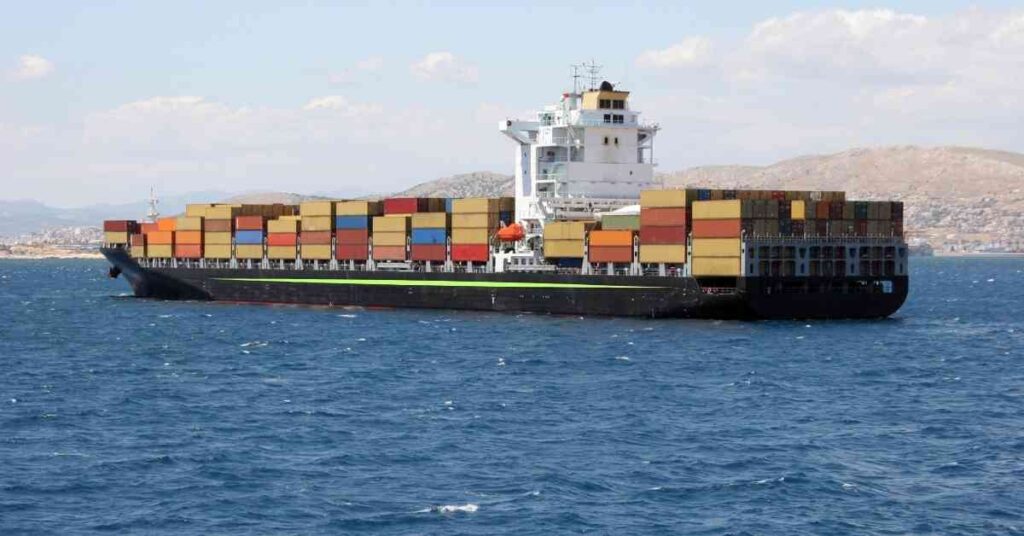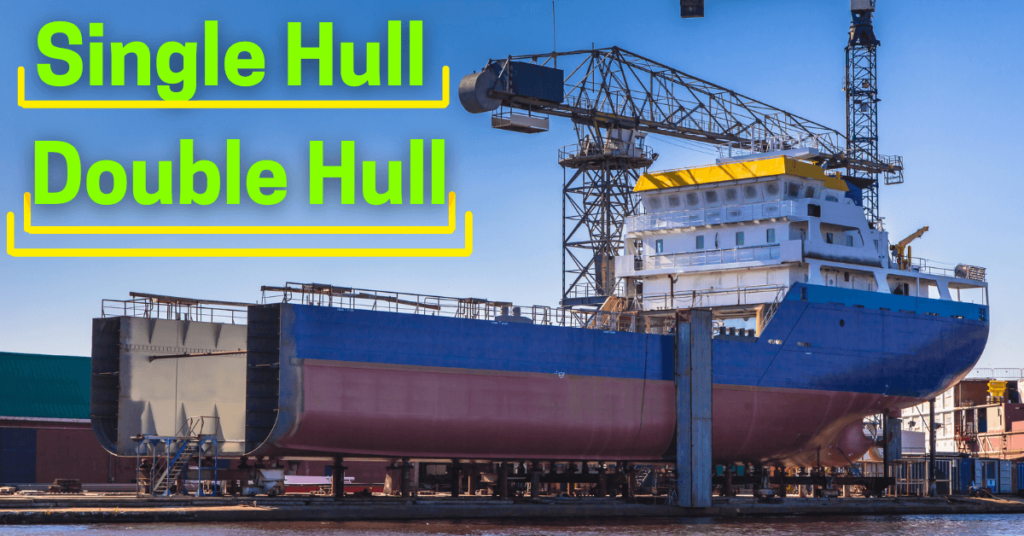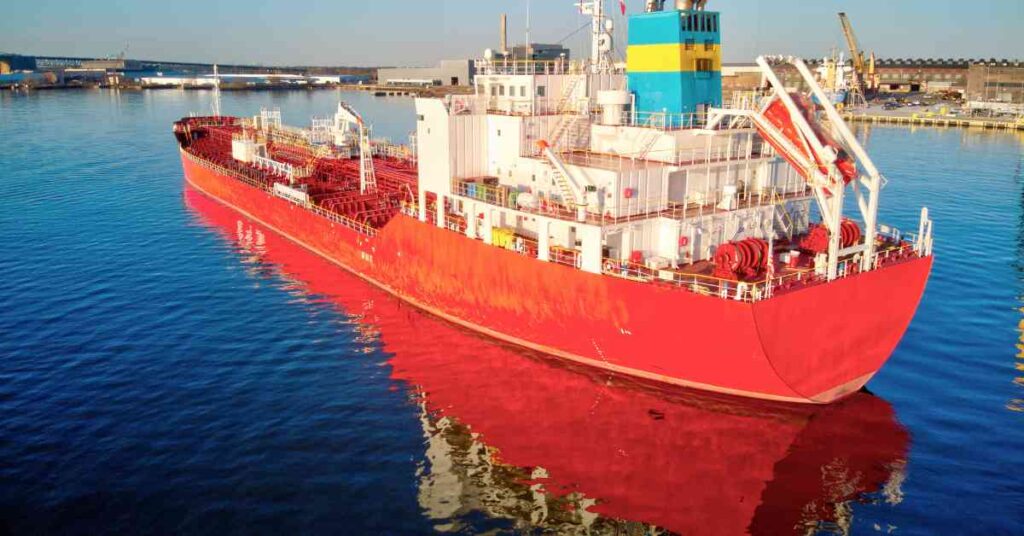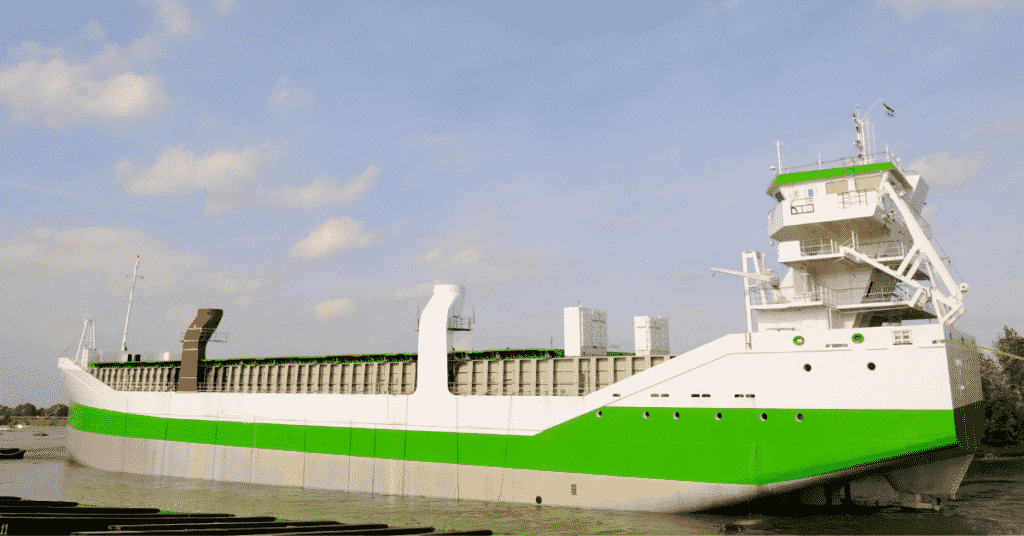What are Triple Hull Vessels?
Monohull vessels have been and will be synonymous with ships, come what may. This is owing to all kinds of reasons ranging from convenience to simplicity, low costs to large capacity, ease in construction to acceptability. However, over the years, there has been an escalated demand to explore unconventional design types in the quest for advancement.
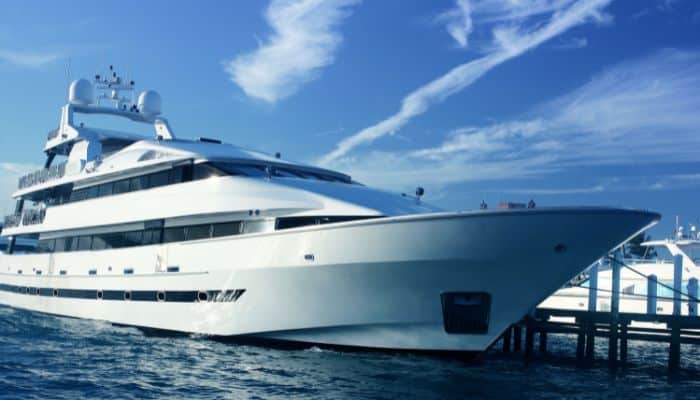
Monohull vessels, despite all kinds of efficient designs, still lacked in terms of high speed and resistance to rough sea states. Moreover, depending on their design, the basis for monohull vessels is directly related to the buoyancy factor, which essentially means that for greater size and capacity, you have to increase the displacement. Furthermore, with all monohulls, there is always some calculated risk or problems in terms of seakeeping and stability characteristics, even if in very minimal degrees for a very safe design.
The concept of multihull vessels came in response to mitigate such challenges and delve deeper into the realm of unconventional designs for improved utility. Multi-hull vessels are vessels that are characterised by the construction of multiple hulls, either two or three, known as catamarans and trimarans, respectively. The advent and application of multi-hull vessels have been the collective result of three major requirements: i) speed, ii) stability and ii) capacity.
Catamarans or twin-hull configuration was the immediate result. This configuration accommodated two hulls, mostly symmetrical and identical, connected mostly by the main deck or some crucial structural member. In almost every vessel, the superstructure or deckhouse was mounted atop the main deck.
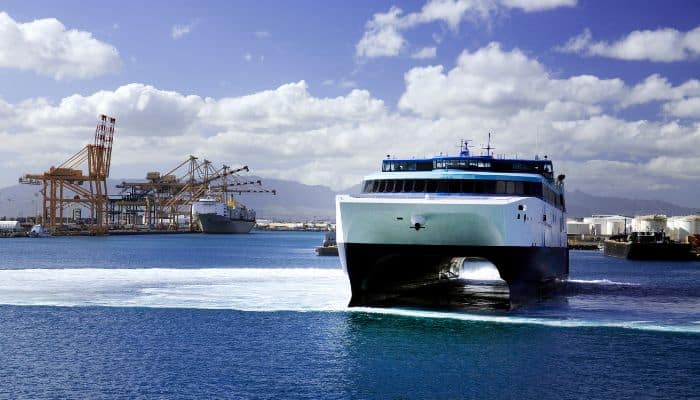
The advent of multihulls was incongruous with the evolution of high-speed planning crafts, which used the interesting concept of hydrodynamic planning effect and partial displacement to tread through waters at high speeds and increased propulsive efficiency. Combining both these developments was quite a game-changer where small to average-sized crafts for defence or passenger flourished dramatically. These high-speed craft had planing characteristics and were hydrodynamically manifold efficient. Moreover, they catered to the requirement of higher payload and capacity over a lesser displacement.
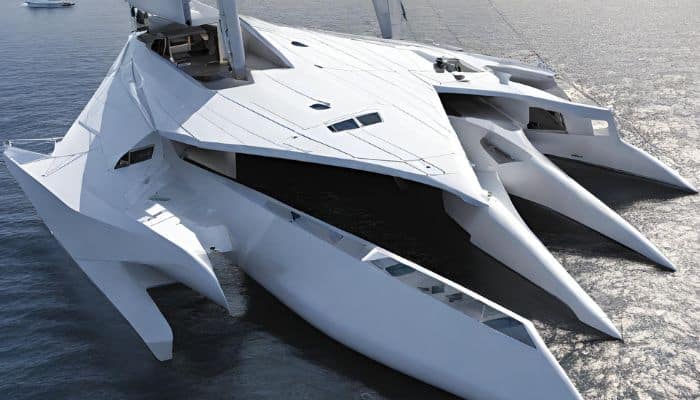
This lesser displacement required per unit payload coupled with high-speed planing characteristics and propulsive efficacy also significantly reduced resistance, both wave-making as well as frictional (due to lesser wetted surface area from each hull).
However, along with the many advantages, some disadvantages were there still. One of them was the high degree of stress that occurred in the way of the connecting cross deck, especially in rough sea conditions. These were mostly due to the torsional and transverse behaviour exhibited as a result of two hulls tending to behave independently. Moreover, these twin-hull configurations also exhibited high motions, including effects like slamming and pounding.
Also, the problem of hydrodynamic resistance was not mitigated at low speeds. The problem of fatigue was also quite significant in the way of the cross deck, especially when the separation between the two demi-hulls was above a certain limit.
Nevertheless, catamarans, or twin-hull configurations, have been common for the last several decades, and their numbers are increasing. Some years down the line, trimarans were proposed to further streamline this problem.
Trimarans are those vessels which essentially have a three-hull configuration.
These three hulls are connected by a single deck known as the cross-deck. For all practical purposes, there is a bigger main hull in the middle, and is, in turn, supported by two smaller side hulls, known as outriggers. However, some designs also have the hulls the same size as in the case of catamarans.
The main design philosophy of trimarans is nothing much different from the broad concept of multi-hull vessels: higher payload or tonnage capacity to displacement ratio. This essentially means that they are able to cater to higher carrying- capacity both in terms of weight as well as space-volume without a significant increase in the displacement that is required. This is a win-win situation for any kind of design as you are able to optimise everything that is ever ideally envisaged:
- Speed
- Hydrodynamic performance
- Stability and seakeeping characteristics
- Capacity
- Greater deck area
- Resistance and propulsion characteristics
- Lesser required displacement
- Lesser fuel consumption
- Optimised distribution of loads and stresses
Design Philosophy of Trimarans
Trimarans were conceived based on the following design goals in mind that would ratify the reliability expectations from multihull vessels even further.
- Managing the resistance even more, especially those stemming from low speeds and large ship motions, and further improving on the speed characteristics. The powering requirements also increase dramatically.
- Reduce wetted surface area even further at similar displacements. This essentially means at even smaller displacements, the payload, as well as the available spaces and deck area, is increased. Hence, by making each of the hulls even more slender, a high value of payload can be maintained. This, in turn, even further improves on the resistance and propulsive characteristics.
- The stability of the vessel is related to the previous point. A triple hull configuration caters for higher stability, as obvious. Hence, not only are we increasing the payload but also having the upper hand on stability while improving the resistance in tandem.
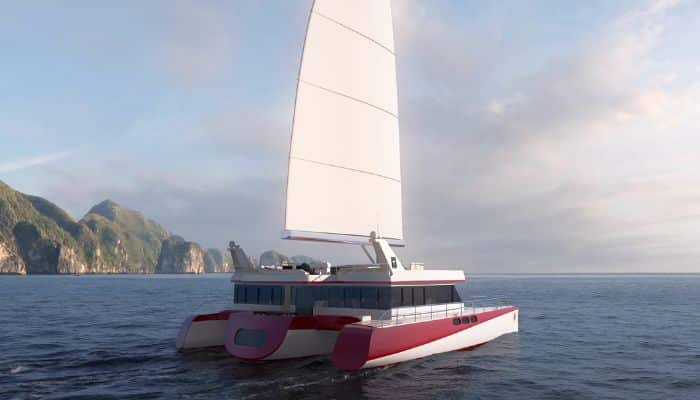
Consequently, the seakeeping characteristics of the vessel are also augmented, especially during rough sea states.
- Flexibility in terms of design. When there is an availability of more space and deck areas, there is more amount of freedom to augment the arrangement.
- Structural strength. This is one of the most crucial aspects associated with the design of trimarans. A 3-hull configuration increases the structural strength of the vessel manifold, both in terms of transverse and longitudinal.
- All oncoming loads on the vessel are distributed more efficiently on the three hulls. As a result, the strength-bearing capacity of the vessel under all circumstances of sea states and motions of the vessel is improved. This also compensates in terms of increased higher usable payload even further. Safety and reliability also come hand-in-hand with strength. Henceforth, a greater strength translates to higher survivability.
Lastly, due to the above advantages, the reduced cost of the vessel in terms of lower material requirements as lighter structural weight can be commensurate to a better design.
Though mostly similar to conventional vessels, the initial design process of trimarans involves the following important aspects:
- Deciding on the stability parameters like metacentric height. As the vessel is already inherently stable, GM height can be increased. Moreover, as per regulations, if the main deck height (and hence the above-water clearance) of the cross-deck(s), which is related to the GM itself, is more than 5% of the waterline length of the vessel, motions like slamming decrease significantly. Hence, trimarans offer much more freedom to increase the GM as compared to conventional vessels.
- Deciding the dimensions of the side hulls. This is also closely related to the damage
stability criteria. - Designing the cross-deck is important, just like in the case of catamarans. The adequate stiffening of the same is also crucial.
- Separation between the hulls based on resistance, strength and utility of the vessel.
- Finally, meticulous allocation of the internal spaces optimising the design and the requirement.
However, multi-hull vessels become less feasible as vessel sizes increase due to a wide range of factors like lack of planing characteristics, lesser feasibility in design, complexity in construction, and so on. Nevertheless, many designs, especially within the gamut of defence vessels, passenger vessels, and other special types of vessels, have explored the feasibility of multi-hull designs with evolution over the years. They have been important successes, even if at a higher cost.
You might also like to read-
- Types of Hulls Used For Vessels
- Different Parts Of A Ship’s Hull
- What is a Skeg in a Vessel?
- Understanding Vessel’s Hull Speed And Its Determination
- Understanding Hunting Gear Mechanism Of Ships
- Understanding The Beam Of A Ship
Do you have info to share with us ? Suggest a correction

About Author
Subhodeep is a Naval Architecture and Ocean Engineering graduate. Interested in the intricacies of marine structures and goal-based design aspects, he is dedicated to sharing and propagation of common technical knowledge within this sector, which, at this very moment, requires a turnabout to flourish back to its old glory.
Latest Naval Arch Articles You Would Like:
Subscribe To Our Newsletters
By subscribing, you agree to our Privacy Policy and may receive occasional deal communications; you can unsubscribe anytime.






